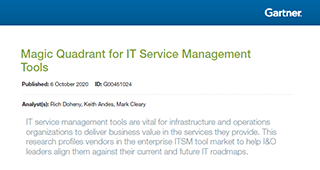
Poorly executed Free Trials will backfire. Just posting a link on a website is not enough. In this blog post, we will explore the additional ingredients needed to rolling-out a successful Free Trial.
Select the Right Product
The best product for a Free Trial is high-quality, simple and easy to install and use, and provides fast and easily recognized value, especially on frequently occurring problems. Be sure to assess a product first with these important filters.
- Whether the Free Trial is for a SaaS or on-premises enterprise product, it’s essential that the product is very high-quality and easy to use. This seems basic, but can be easily overlooked. A product with a poorly designed user experience is not a good fit for a Free Trial.
- The overall installation and configuration experience has to be ultra-simple. Otherwise, users will see only frustration on the implementation side, with no time for the product capabilities to overshadow a poor initial experience.
- On-premises products with a low time-to-value are a poor fit for Free Trials. If the product takes 6 months to quantifiably demonstrate customer value and benefits, it’s not the best fit for a Free Trial. A managed POC and/or complementary “sandbox” demo may be a better way to provide access to all functionality and showcase the full benefits.
- Products that solve problems that don’t occur frequently are also not good fits for Free Trials. If there’s very little value delivered beyond the Free Trial period, businesses run the risk of getting trial downloads, but not paying customers.
You can build it, but that doesn’t mean they will come
Up to this point we’ve mainly covered product readiness and suitability for a Free Trial program. The next step is marketing. If you are offering trial, you must reach out to the target base and make them aware. Before you can effectively market your trial though, you must discover which potential customers to chase. A Free Trial is your chance to shine – there is no less intrusive way to get into a customer account.
- You need to do a deep analysis of the target market to understand its size, purchasing practices, and company sales practice in order to map the techniques and investments.
- Marketing is not a one-size fits all approach. Multi-touch campaign planning is the name of the game. Hit your target consumers with a mix of SEO, social media, paid search, public relations, events and email campaigns.
When they come, you must delight!
Congratulations! Someone downloaded your trial. Now what? The prospect must execute the trial and use the product in a way that they are able to quickly recognize the value.
- If this is a potential “golden account,” it might be a good idea to assign them a technical resource to make sure they have the optimal set-up, experience the greatest value and have a pre-established contact if they decide to purchase. Automation is beautiful, but don’t forget about the value of the human element.
- A very simple sign up process (minimum # of steps, fields and decisions) is key to having high percentage sign-ups or downloads.
- Unfortunately the majority of prospects will drop off after initial sign up or download. So what should you do to make sure your amazing product actually gets deployed? Companies must design a frictionless workflow from sign up to value realization, follow up and follow through with useful information and make the entire experience more personal. (Check out detailed report here).
My Economics professor told me there is no such thing as “Free”
Be aware that Free Trials are not really free for either prospects or vendors. Trial executors are busy people. It may not be costing prospects any upfront cash, but it takes time to run the trials and work with the solution enough to see the value. While Free Trial programs can be very successful in attracting and converting customers, they are NOT FREE for the vendors, either. Upfront planning and budgeting is a must to minimize the surprises and increase probability of success.
- Solution providers must invest to minimize that cost. Match your trial participants with the resources they need to make the entire experience as frictionless as possible.
- Free Trials can’t be a standalone process; it must be part of an overall customer acquisition process – from lead gen to signing contracts. This takes time and effort. Make sure you have the resources on YOUR team to do it right. Consider the costs of attracting prospects (SEO, PR), supporting the solution and the trial, and converting prospects into customers.
Executing a Free Trial Program is an exciting way to bring IT products to market. We believe in our technology and we can’t wait to get it in the hands of customers. We want to see them fall in love, realize the value our solution brings to their IT environment, making their lives easier and preparing them for the next big thing. To make this dream a reality, BMC makes investments in time, money, marketing, engineering, and pre-sales. We invest in the legwork so that our customers and our customers-to-be can implement our solutions and realize the value quickly.






